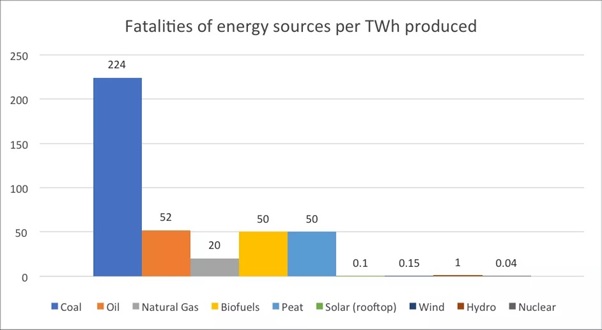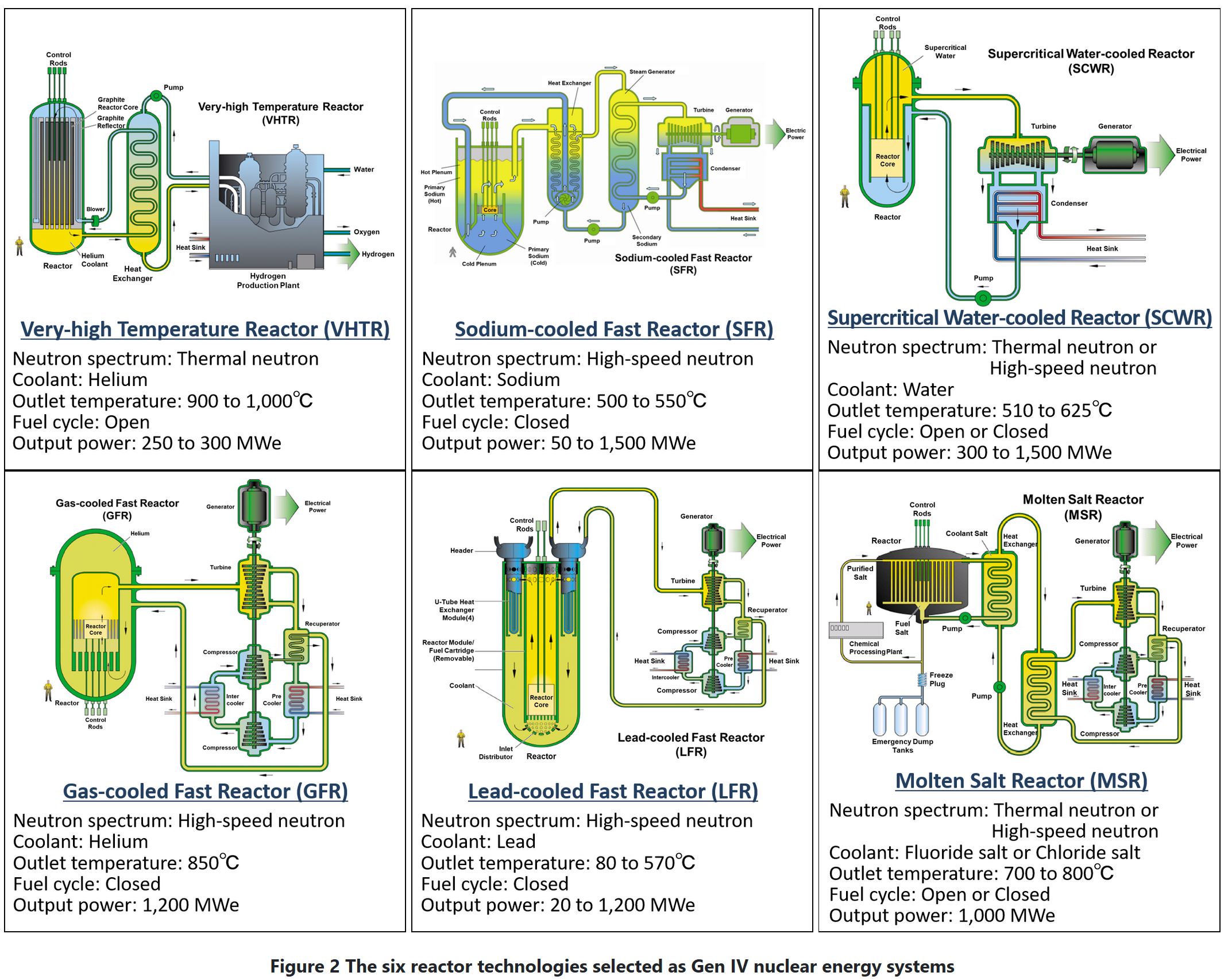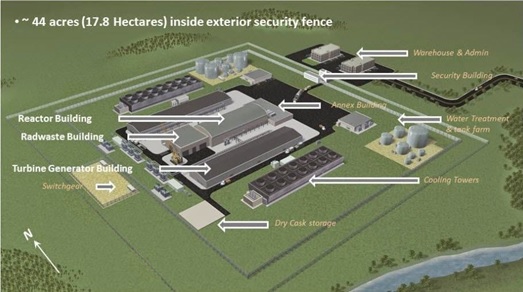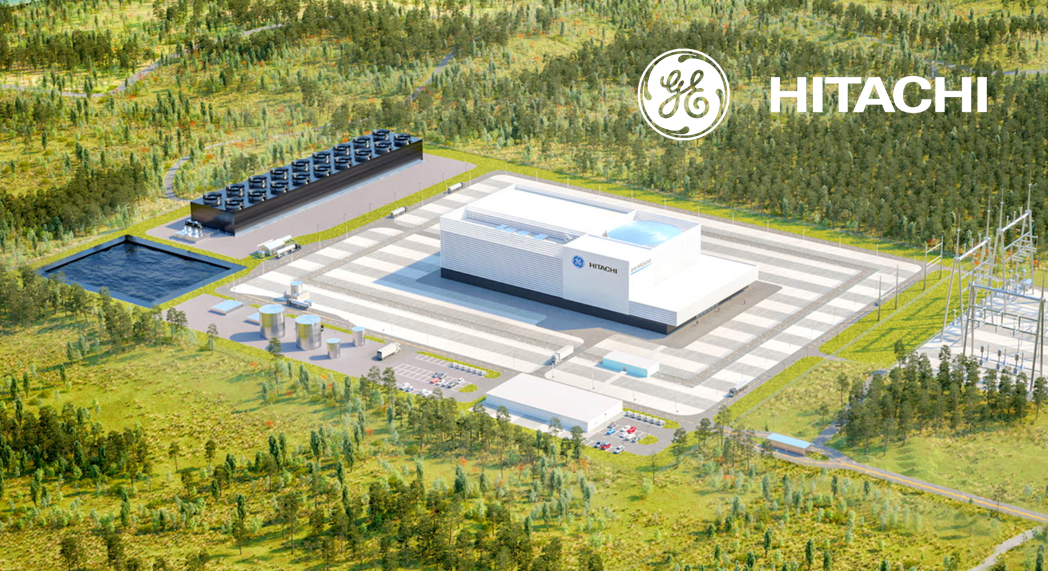
Nuclear Power Plant Technologies
In a 22 year period from 1977 to 1999 France built a generating system containing 58 reactors.
Its capacity was of similar size to Australia’s but generates only 40 gr CO2/kwh or less that a 20th of Australia’s emissions intensity.
You can download a PDF form of this page at this link.
Edition 8, Revised 26/06/2023
Nuclear Power Plant Technologies
Are you a bit confused by the different names nuclear power plants get?
Some are called SMR’s – Small Modular Reactors
Some are large reactors and then we hear about Generation III or Gen III+ or Gen IV.
Where do they all fit? On this page we will explain a bit of that especially for Australian conditions.
Following that we’ll look at selection criteria and potential sites for nuclear power plants around Australia
Evolution of Nuclear Power Plants
Nuclear power plants are undergoing new stages of development as shown in Figure 1

Figure 1 The generations of nuclear energy systems (From IAEA Gen IV Forum)
The vast majority of existing nuclear power plants, generating safe, clean, reliable electricity in the USA, Japan, Europe and elsewhere are Generation II. The nuclear power plants used in western nations such as Pressurised Water Reactors (PWR), Boiling Water Reactors (BWR), Gas Cooled Reactors in the UK and CANDU reactors in Canada have proven to be far safer than any other electricity generating source.

Generation III and III+ are newer reactors with increased safety, lifetime and operational performance.
Generation III reactors achieve improved safety performance over older units by increasing the number of active safety systems available. This has the benefit of creating more redundancy of systems to provide backup in the unlikely event of an accident, but consequently increases complexity. Active safety systems use AC electricity to power pumps and actuators to maintain cooling following an accident or “station blackout” (loss of onsite and offsite power), with diesel generators to provide backup power. Many Generation III reactors also address “aircraft crash protection” and provide “core catchers” to contain the corium in the case of a meltdown. Most Generation III reactors are constructed in a traditional “stick build” process, meaning the majority of structures are assembled in place at the construction site.
Generation III+ reactors achieve their improved safety performance utilizing “passive safety” systems. Passive safety systems use only natural forces such as gravity and convection to provide cooling in accident scenarios. In a station blackout (i.e. as happened in the Fukushima Daiichi accident), these reactors will shut themselves down without AC power or operator action and maintain core cooling for at least 72 hours, using only natural forces. After this period, further water and equipment is available onsite to maintain cooling indefinitely. These reactors also address aircraft crash protection and are equipped with systems to maintain corium in the reactor vessel in the case of core meltdown, negating reactor vessel breaches and the need for core catchers.
Passive safety systems result in a significant simplification of the nuclear power plant, greatly reducing complex componentry and site footprint. This also results in an improved “man-machine interface”, requiring less operational and maintenance staff. This can be of particular interest to new and developing nuclear nations.
Another feature of Generation III+ reactors is their utilisation of advanced “modular construction” methods. Modular construction increases the amount of factory build, increasing efficiency and quality, while creating parallel construction paths and removing congestion from the build areas.
Some Generation III+ reactors also have advanced load-follow capabilities using a dedicated system of control rods to efficiently vary reactor output, without the need for changes in reactor chemistry (changing the boron content of the reactor coolant water). This achieves 5% per minute ramp up or down of output without generating increased chemical effluents. Nuclear power plants are most cost-effective when operating at 100% output in “baseload” mode, but flexibility to balance the variable nature of renewable sources is becoming increasing important for grid stability.
The Generation III and III+ nuclear power plants shown in Figure 1 are either pressurised or boiling light water reactors, typical of the majority of the operating fleet. Exceptions include the Canadian CANDU reactors, which uses heavy water as the moderator and Gas Cooled Reactors which use graphite as a moderator.
That process uses “thermal spectrum” or slow-moving neutrons, which have been slowed or “moderated” by light or heavy water or graphite. These slow-moving neutrons are able to split or fission the uranium nucleus more readily than fast moving neutrons.
Generation IV will be the next big step in reactor design. Many will be evolutions of earlier Generation I prototype technologies.

Generation IV nuclear power plants have the following key benefits and features:
- Five of the options can use a “Closed Nuclear Fuel Cycle”. In simplest terms, our current nuclear power plants use less than 2% of the potential energy from the natural uranium.[i] The used fuel then either goes off to waste or a portion is recycled but there are limits on this process. This “Open Cycle” is very wasteful of uranium resources.
- By using “Fast Spectrum Reactors” in a “Closed Fuel Cycle”, more of the uranium can be consumed and very small amounts of long-lived nuclear wastes such as Plutonium, Neptunium and other transuranic isotopes are produced. Even the long-lived wastes from our current reactors can be burned up resulting in fission products being the only wastes. With half-lives of about 30 years, these fission wastes require storage for only around 300 years.
- These closed fuel cycle reactors can provide at least a 30-fold improvement in fuel use. Uranium then becomes effectively an unlimited resource and the problem of long-term nuclear wastes is significantly reduced.
- At least three designs operate at or near atmospheric pressure which effectively eliminates the need for a high-pressure containment and primary coolant circuit. This has the potential to reduce construction costs
- Load following is more readily achieved.
- Some designs suit high and very high temperature outputs. This allows for more efficient hydrogen manufacture and the extension of low carbon operations into metals smelting and transport fuel synthesis.
- Many of these designs promise cost effective power generation with low emissions and high safety factors once the designs mature.
Small Modular Reactors (SMR’s)
Small Modular Reactors (SMR) are at the development stage and are mostly a variation of Generation III+ technologies. Others further down the track such as Terrestrial Energy’s Integral Molten Salt Reactor are Generation IV.
The World Nuclear Association[ii] notes the enormous potential of SMRs rests on a number of factors, (some of which are typical of the Generation III+ reactors on which they are based):
- SMRs can be built in a controlled factory setting and installed module by module, improving construction quality and efficiency.
- Their small size and passive safety features suit countries with smaller grids and less experience of nuclear power.
- Small size and construction efficiency lead to easier financing compared to larger plants.
- Achieving economies of series production for an SMR design will reduce costs.
- Small power, smaller radioactive inventory, compact architecture and employment of passive concepts leads to less reliance on active safety systems and additional pumps, as well as AC power for accident mitigation.
- Potential for below ground or underwater location of the reactor units providing more protection from natural or man-made (e.g. aircraft impact) hazards.
- The modular design and small size lends itself to having multiple units on the same site.
- Lower requirement for access to cooling water – therefore suitable for remote regions and for specific applications such as mining or desalination.
- Ability to remove reactor module or in-situ decommissioning at the end of the lifetime.
One such unit is that of NuScale which consists of six or twelve 77MW units arranged in a pond as shown in Figure 3. This uses Generation III+ pressurised water reactor technology. The nuclear power units comprise the reactor plus pressuriser and steam generator and weigh in at about 460 tonnes each. In practice these may need to be broken down into sub-assemblies for more economic transport.
[i] “Fast Spectrum Reactors” Waltar, Todd and Tsvetkov ‘Fast Spectrum Reactors para 1.4.2
[ii] https://www.world-nuclear.org/information-library/nuclear-fuel-cycle/nuclear-power-reactors/small-nuclear-power-reactors.aspx
In a practical sense, these nuclear power plants can really be labelled Small Reactors. While the nuclear power module has been modularised, the balance of plant, including the associated structures, requires conventional construction. As a study by MIT[i] has found strict attention to cost reductions of these structures is essential if SMR’s are to achieve their promise.
The NuScale plant shown in the following image

Figure 3 – NuScale 360 MW nuclear island.
The overall plant layout is shown in Figure 4 and shows the significant civil engineering and building component required to house these individual modules.
[i] https://energy.mit.edu/wp-content/uploads/2018/09/The-Future-of-Nuclear-Energy-in-a-Carbon-Constrained-World.pdf

Figure 4 – NuScale plant layout
Another promising Generation III/III+ SMR is the BWRX 300 from General Electric Hitachi[i]. The designers of the 300MWe design have taken the MIT recommendations on board particularly with respect to the civil engineering structures.
[i] https://nuclear.gepower.com/build-a-plant/products/nuclear-power-plants-overview/bwrx-300

Figure 5 – GE Hitachi BWRX 300
Compared to large reactors, the BWRX-300 aims to achieve about a 90 percent volume reduction in plant layout. Notably, it is designed to reduce building volume by about 50 percent per MW, which should account for 50 percent less concrete per MW. For example, the large 1,520 MWe ESBWR has approximately 160,000 m3 of safety related concrete while the BWRX-300 has only 15,500 m3. The BWRX-300 aims to significantly improve the next wave of reactors due to its affordability and advantageous size.
It’s early days however this SMR aims to generate electricity on a competitive basis with gas turbines and renewable energy generators. It aims to have a 60% reduction in capital cost compared to typical waster cooled SMR’s and to be deployed by 2028.

